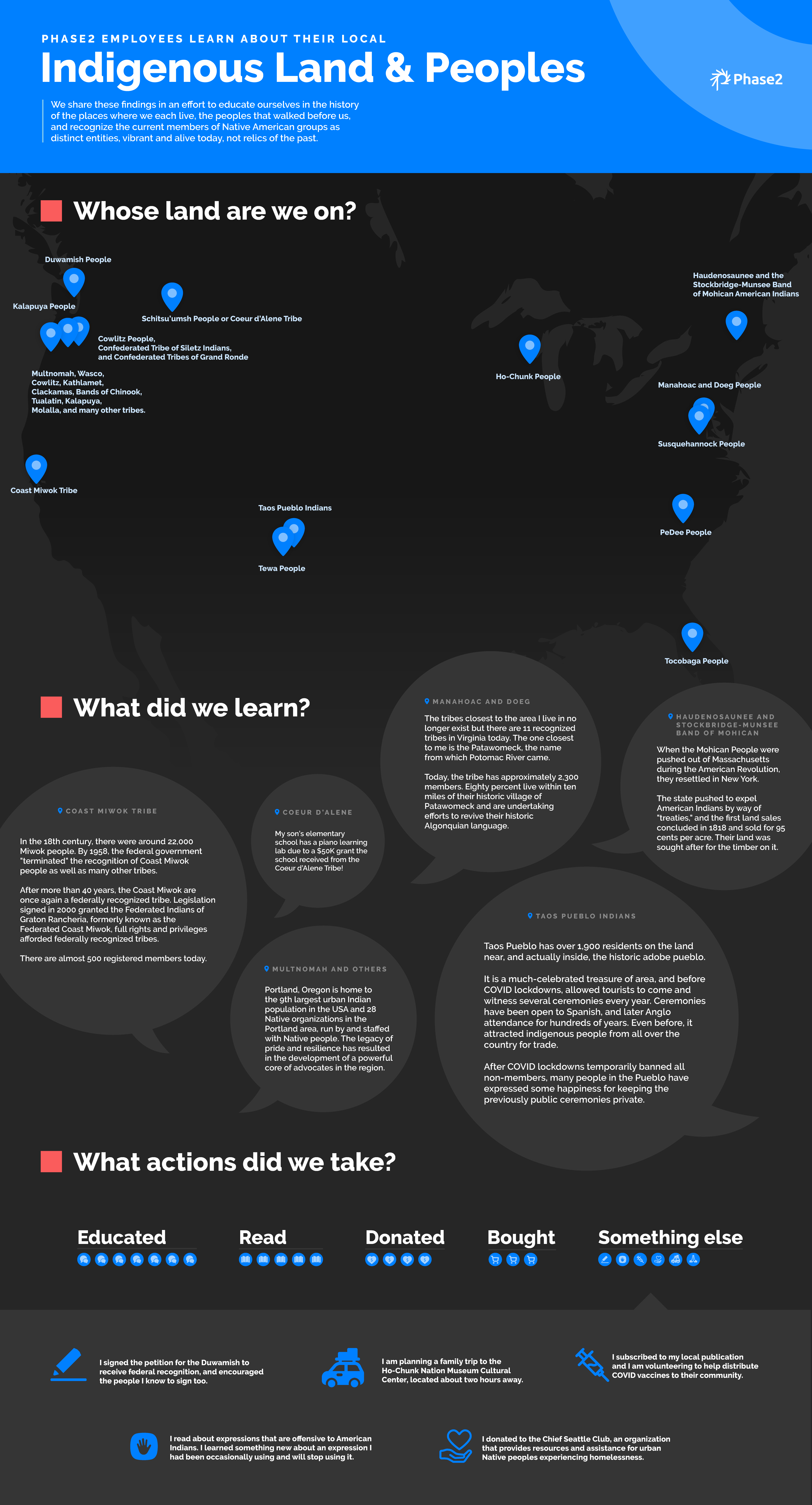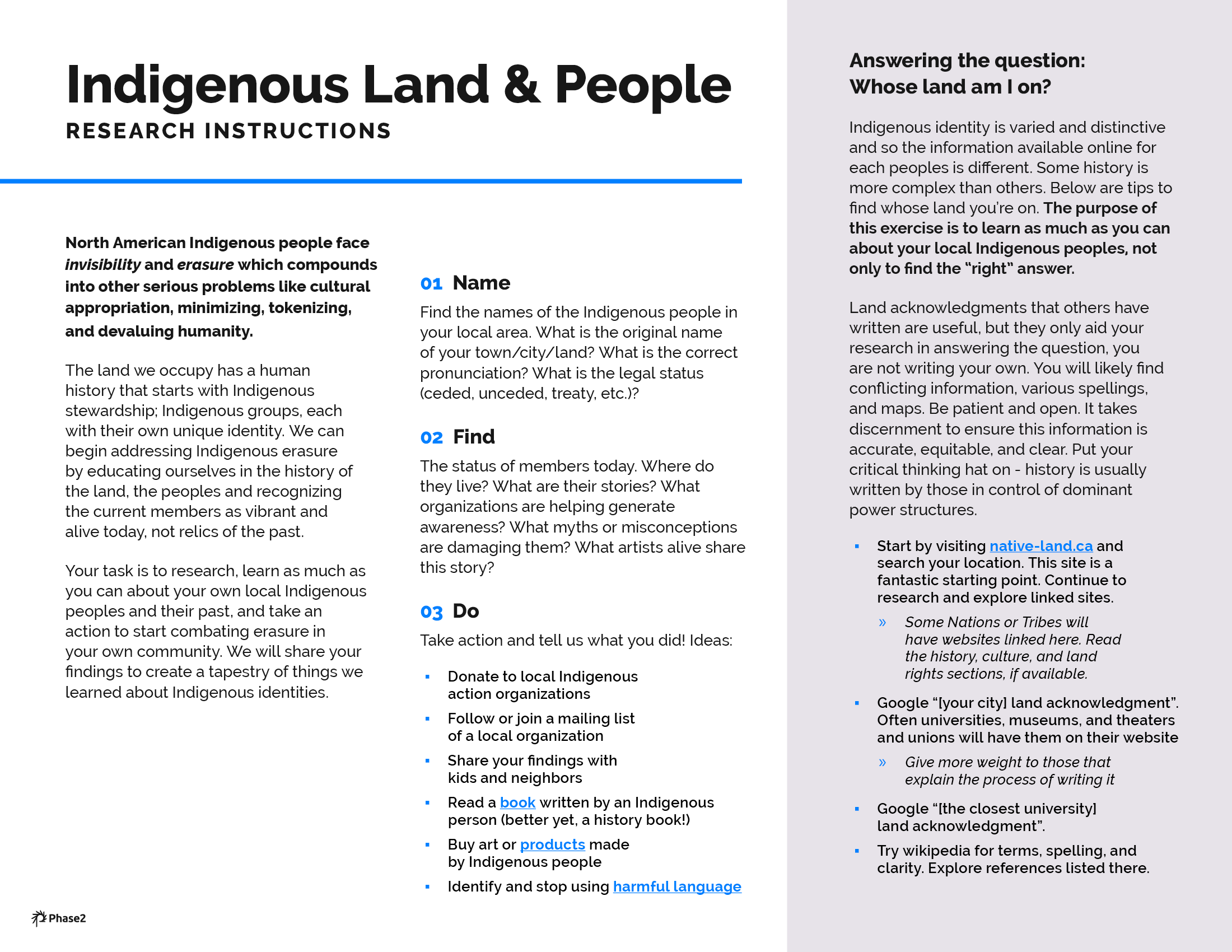Acknowledging Land From Afar
Acknowledging Land From Afar
Sedona Rigsby | Senior Designer
October 5, 2021
As a remote-first company we often think we have a small, agile, physical footprint - it’s just spread out across this vast country. After all, most of us need only a laptop to do our work.
We don’t usually think of where that footprint lands; the actual places we occupy and the Indigenous stewards, whose land in most cases, was forcibly taken. And we don’t often acknowledge that Native Americans are vibrantly alive today - and facing mistreatment. Mistreatment stoked by historical misunderstanding.
The number one problem Indigenous people of today face is invisibility and erasure which compounds many of the problems [our] people face - which includes culturally appropriating, minimizing, tokenizing, and devaluing humanity.
Reclaiming Native Truth
We can begin addressing the mistreatment and erasure of Indigenous people through intentional pursuit of understanding. We can educate ourselves on the history of the places where our footprints tread, the peoples that walked before us, and recognize the current members of Native American groups as distinct and current entities, not relics of the past.
Phase2 has people working in 28+ states and 150+ places. To address Indigenous erasure, we began by acknowledging the Indigenous people of land we are spread across.
Change Starts Small
Can you recite the names of the Indigenous groups on whose land you live? Neither could most of us.
So we learned.
We tasked employees with researching as much as they could about their local Indigenous peoples and their histories; then asked them to take a small action to combat erasure in their own lives. Finally, we shared our findings to create a tapestry of learnings around Indigeneity in our separate communities. In doing so, we learned that each group has a unique history, set of challenges, and identity. But the most important takeaway may have been: “I learned just how much I don't know, how much I was only scratching the surface.”

It’s important to note that knowing on whose land you reside is different from a formal land acknowledgement. A land acknowledgement is a statement that intends to name, honor, and recognize the original stewards of the land on which a person or organization physically operates. We are continuing our learning in this area and are in the process of formally writing land acknowledgements for each of our offices.
Now Let’s Do Something About Inequity
Learning is the first small step to addressing inequity. To really make a difference, it is important to take action. For a remote company like ours, there’s personal and organizational actions we can all take to help. These are some options:
Possible actions for individuals:
- Donate to local Indigenous action organizations
- Follow or join a mailing list of a local organization
- Share findings with kids and neighbors
- Read a book written by an Indigenous person (better yet, a history book!)
- Buy art or products made by Indigenous people
- Identify and stop using harmful language
Possible actions for organizations:
- Write and display land acknowledgements for each office, paired with a donation
- Add land acknowledgements to the locations page on your website
- Speak it aloud at all-company gatherings (even virtual, on a rotating location basis)
- Match employee donations to individual organizations
Start Here
We all have the opportunity to educate, fight against erasure, and make real change at the same time. Start with the assignment below, but make sure it doesn’t stop there.

